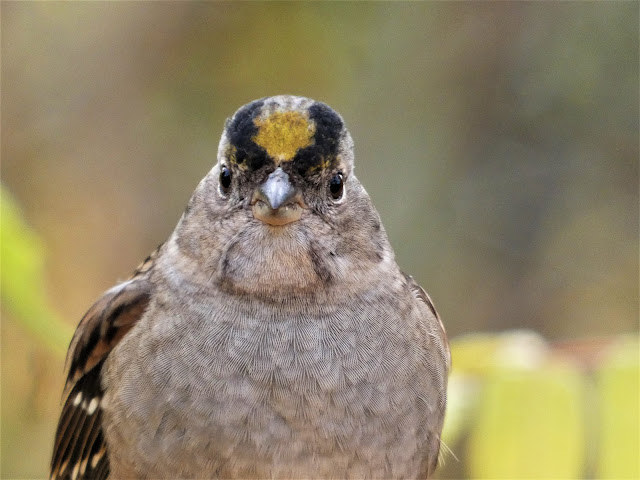We're not afraid of asking the tough questions here at Geotripper, and sometimes we might even answer them. Today it's about the Golden-crowned Sparrow (
Zonotrichia atricapilla): Why do we call them that? The answer: they are sparrows, and they tend to have golden crowns! It's a little more vivid during the breeding season, but the sparrow I ran into yesterday had one, however faded. I was on my normal walk along the Tuolumne River Parkway Trail.
It turns out that even though the sparrow is relatively common in our area, and I've been doing this blog since 2014, I've
only once devoted a post to this attractive little bird. This individual decided to change that. The Golden-crowns are migratory birds, spending the summer in the far north. They only started arriving back in our region in the last few weeks. I'm really bad at remembering the songs of most birds, and heard a mostly unfamiliar song in the brush. I suspected it might be a Golden-crowned Sparrow, so I quietly played the song on my phone, and out came this bird, which perched at my eye level, and started at me. It didn't move while I took one shot after another.
Those of you who don't live on the Pacific Coast might not recognize this sparrow. It is closely related to the White-crowned Sparrow that is found across North America, but the Golden-crowned only occasionally wanders east of the Sierra Nevada and Cascades, although there have been rare sightings on the Atlantic Coast states and elsewhere.
According to AllAboutBirds, the sparrow is one of the more poorly studied species in its Arctic summer home. Maybe there is a job for a budding ornithologist there...
 |
| "I'll thank you not to study ME, good sir" |





